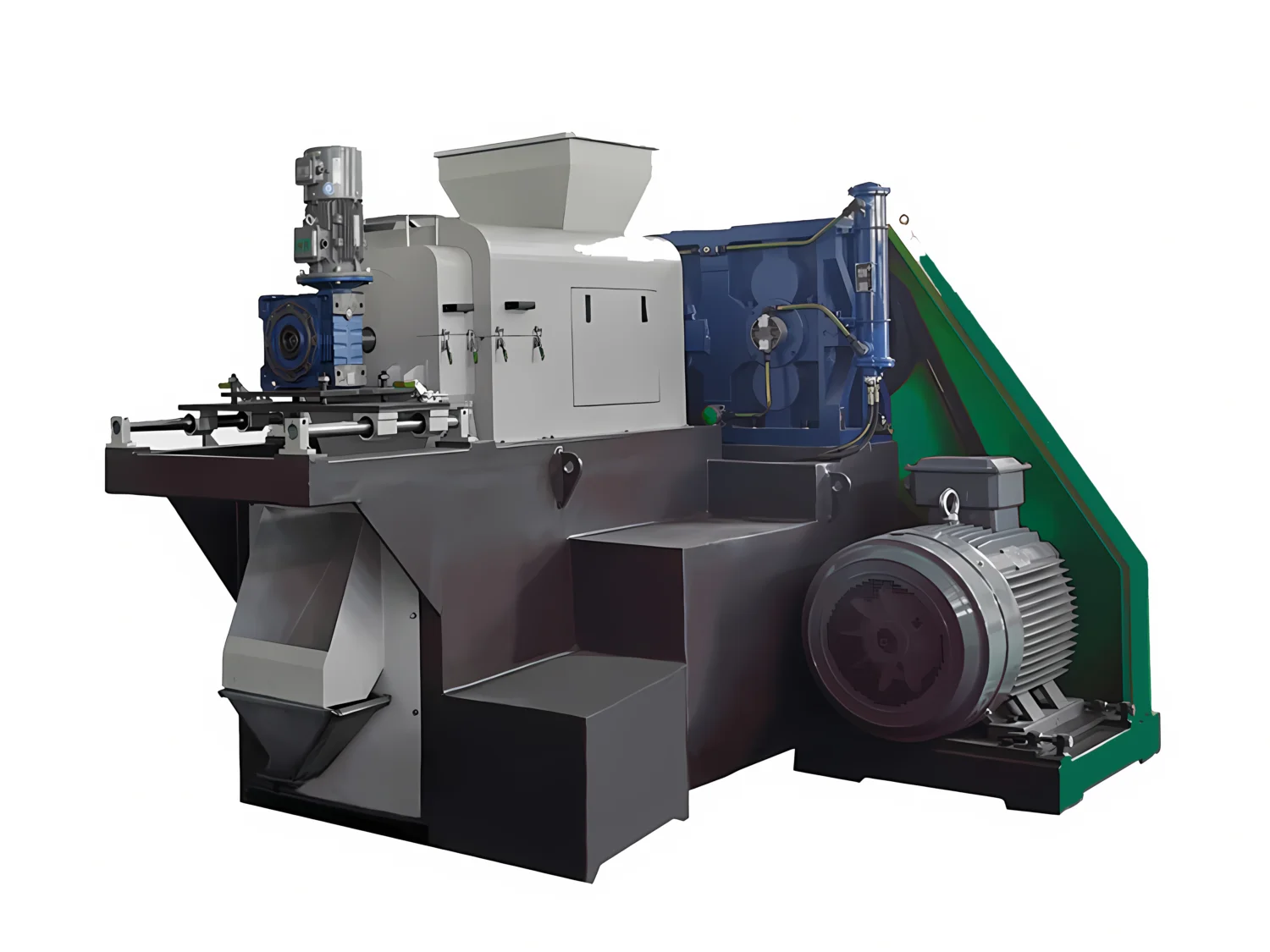Managing plastic film waste effectively is one of the biggest challenges facing recycling facilities today. While the importance of recycling plastic film is clear—it reduces landfill waste and conserves valuable resources—traditional processing methods often struggle with inefficiency, high energy costs, and inconsistent output quality.
That’s where modern plastic film screw press systems are making a real difference. These innovative machines are helping recycling operations process more material in less time while significantly cutting operational costs and improving the quality of recycled plastics.
In this guide, we’ll walk you through how these systems work, why they’re becoming essential equipment for forward-thinking recycling facilities, and what benefits you can expect when implementing this technology.
Understanding Plastic Film Screw Press Technology
At its core, a plastic film screw press system is engineered to solve a critical problem in plastic recycling: removing excess water from washed plastic film quickly and thoroughly. The technology combines mechanical pressure with intelligent design to achieve dewatering rates that traditional methods simply can’t match.
The Key Components
Modern screw press systems consist of several integrated components working in harmony:
Alimentador Hopper: This is where your washed plastic film enters the system. The hopper design ensures consistent, controlled feeding that prevents jamming and maintains steady throughput.
Parafuso de transporte: More than just a transport mechanism, the screw is precision-engineered to move material efficiently while beginning the compression process. Its design varies based on the specific film types you’re processing.
Câmara de Desidratação: This is where the magic happens. As the screw rotates, the chamber diameter progressively decreases, creating intense pressure that literally squeezes water out of the plastic film. The gradual compression ensures thorough dewatering without damaging the material.
Sistema de filtragem: Separated water needs somewhere to go. The filtration system channels expelled moisture away from the plastic while preventing any material loss, keeping your process clean and efficient.
Saída de descarga: The final stage delivers compacted, significantly drier plastic material that’s ready for the next processing step—whether that’s pelletizing, further washing, or packaging for sale.
Why Screw Press Systems Outperform Traditional Methods
If you’re currently using centrifuges or air drying methods, you’re likely familiar with their limitations. Screw press systems address these pain points head-on with several compelling advantages.
Dramatically Faster Processing
Time is money in recycling operations. Screw press systems can dewater plastic film in a fraction of the time required by centrifugation or thermal drying. This speed advantage means you can process significantly higher volumes without expanding your facility footprint or adding shifts. Many operators report processing time reductions of 50% or more compared to their previous methods.
Substantial Energy Savings
Energy costs can make or break profitability in recycling. Unlike thermal dryers that consume enormous amounts of electricity or gas, screw press systems rely on mechanical pressure—a much more energy-efficient approach. The result? Lower utility bills and a reduced carbon footprint. Some facilities have reported energy consumption reductions of up to 70% after switching to screw press technology.
Superior Material Quality
Moisture content directly impacts the value of your recycled plastic. Excessive water means paying to ship weight that isn’t usable material, and it can cause problems during pelletizing or remanufacturing. Screw press systems achieve moisture levels of 3-5% or lower, producing consistently dry flakes that command premium prices and perform better in downstream applications.
Reduced Labor Requirements
Automation is key to controlling costs. Screw press systems operate with minimal manual intervention once material is loaded. Unlike batch processes that require constant attention, these continuous-operation systems let your team focus on quality control and other value-added activities rather than babysitting equipment.
Improved Bottom Line
When you combine faster processing, lower energy consumption, reduced labor needs, and higher-quality output, the financial impact is substantial. Many recycling facilities report ROI periods of 18-24 months, with some achieving payback even faster depending on their throughput volumes.
Beyond Efficiency: Additional Strategic Benefits
The advantages of screw press systems extend well beyond the obvious operational improvements.
Processing Flexibility
Plastic film comes in many varieties—LDPE, HDPE, LLDPE, agricultural films, packaging films, and more. Quality screw press systems handle this diversity without requiring extensive changeovers or adjustments. This versatility means you can accept a wider range of incoming material, opening new revenue streams without investing in specialized equipment for each material type.
Built for Longevity
Recycling equipment takes a beating. Screw press systems are constructed with hardened steel screws, reinforced chambers, and heavy-duty drive systems designed for continuous operation in demanding environments. When properly maintained, these systems deliver years of reliable service with minimal downtime. This durability translates to predictable operating costs and fewer unexpected repair expenses.
Environmental Leadership
Sustainability isn’t just good ethics—it’s increasingly good business. By maximizing recycling efficiency and quality, screw press systems help close the loop on plastic waste. The energy savings also mean a smaller carbon footprint for your operations, a selling point that resonates with environmentally conscious customers and partners.
Pegada compacta
Real estate is expensive. Despite their impressive capacity, modern screw press systems occupy relatively little floor space compared to the volume they process. This efficiency makes them suitable for facilities of various sizes and allows room for future expansion.
Real-World Implementation: What to Expect
Integrating a screw press system into your operation is straightforward, but understanding the process helps ensure success.
Most systems can be installed and commissioned within a few days, with minimal disruption to existing operations. They integrate seamlessly with upstream washing systems and downstream pelletizing or baling equipment. Training requirements are modest—operators typically become proficient within a few shifts.
Maintenance is refreshingly simple. Regular inspection of the screw, seals, and drive components, along with periodic lubrication, keeps the system running smoothly. Many operators perform most maintenance tasks in-house without specialized technicians.
Choosing the Right Solution for Your Facility
Not all screw press systems are created equal. When evaluating options, consider throughput capacity (measured in kilograms per hour), motor power requirements, final moisture content achievable, and the types of plastic film you’ll process most frequently.
Working with an experienced technology provider makes all the difference. Energia specializes in screw press dewatering systems engineered specifically for plastic film recycling applications. Their systems are designed with practical operator input, ensuring reliability and ease of use in real-world conditions.
The Future of Plastic Film Recycling
As global demand for recycled plastics continues growing and sustainability regulations become stricter, recycling facilities face increasing pressure to improve efficiency and output quality. Screw press technology isn’t just keeping pace with these demands—it’s helping define the future of plastic film recycling.
Facilities investing in this technology today are positioning themselves as leaders in an industry that rewards innovation, efficiency, and environmental responsibility. The combination of operational benefits, financial returns, and environmental impact makes screw press systems one of the most strategic investments a recycling facility can make.
Perguntas frequentes
What types of plastic film work best with screw press systems?
These systems effectively process virtually all common plastic films, including LDPE, HDPE, LLDPE, PP films, agricultural films, stretch wrap, and packaging films. The key is that the material has been properly washed before entering the screw press. If you’re processing specialty films, consult with your equipment provider to ensure optimal configuration.
How much space do I need for a screw press system?
Space requirements vary by capacity, but most systems designed for small to medium facilities need approximately 3-5 meters of floor space. Larger industrial systems may require more room. The compact design usually fits within existing facility layouts without major reconfiguration.
What’s the realistic payback period?
Most facilities processing moderate to high volumes of plastic film see ROI within 18-24 months. Higher-volume operations or those replacing particularly inefficient legacy systems may achieve payback in 12-18 months. The calculation depends on your current processing costs, throughput volume, and the value of your output material.
Can screw press systems reduce my environmental impact?
Absolutely. By dramatically lowering energy consumption compared to thermal drying, reducing waste through better moisture removal, and improving recycled material quality (which increases actual recycling rates), screw press systems significantly reduce the environmental footprint of plastic film recycling operations.
What kind of maintenance should I expect?
Routine maintenance is straightforward: regular visual inspections, lubrication of moving parts, and occasional replacement of wear components like seals. Most facilities handle standard maintenance in-house. Annual or semi-annual professional servicing ensures optimal long-term performance.
Is specialized training required?
Basic operation requires minimal training—most operators become comfortable within a few shifts. The systems are designed with user-friendly controls and safety features that make operation intuitive. More detailed training on maintenance and troubleshooting is typically provided during installation.
Ready to transform your plastic film recycling operation? Discover how Energycle’s screw press dewatering systems can improve your efficiency, reduce costs, and enhance output quality. Visit Sistema de desidratação por prensa de parafuso to learn more about solutions designed for real-world recycling challenges.



